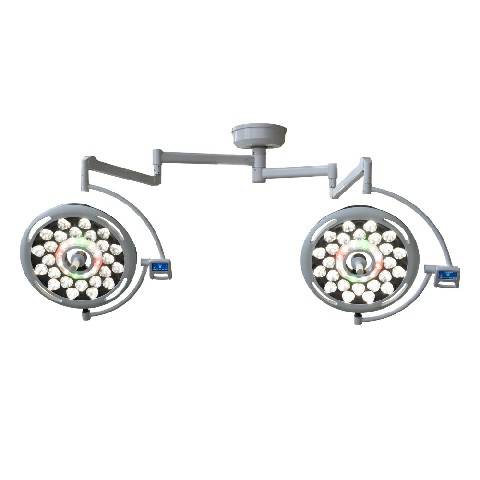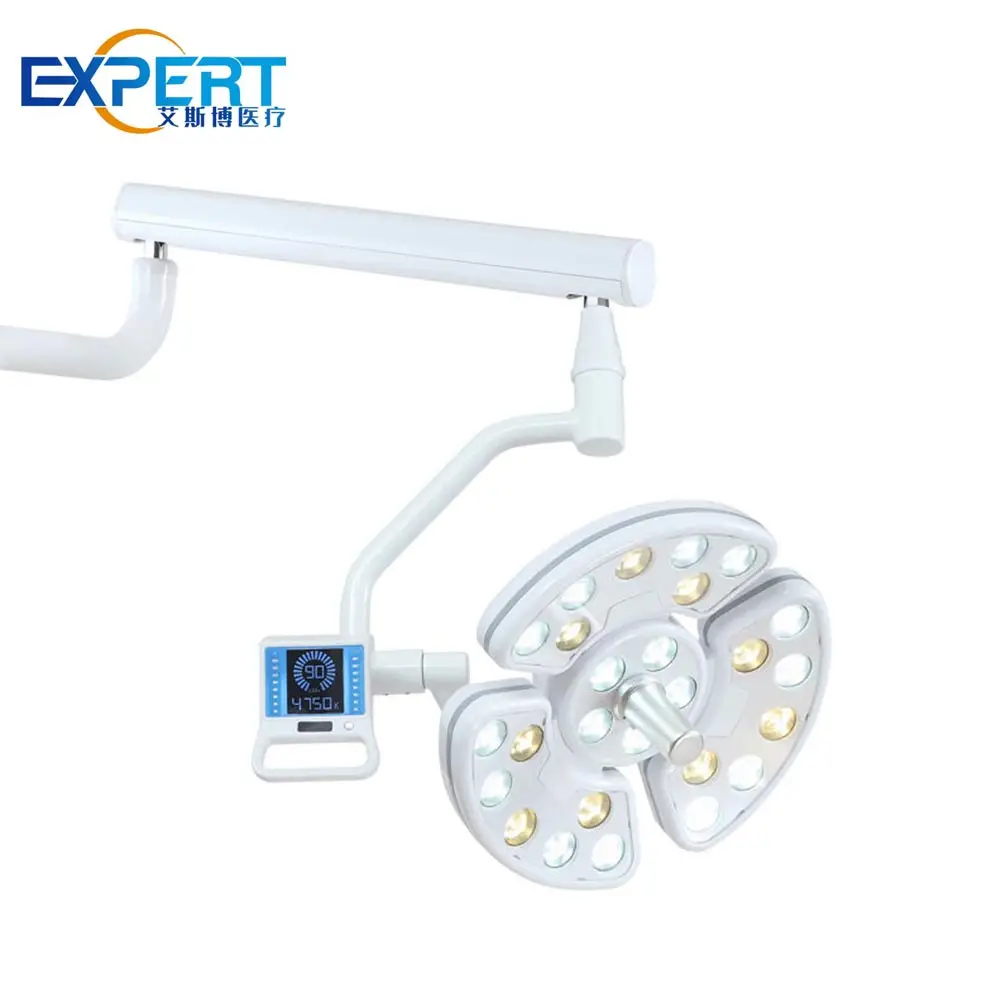Endereço
304 North Cardinal St.
Dorchester Center, MA 02124
Horas de trabalho
Segunda a sexta: 7h00 - 19h00
Fim de semana: 10h - 17h
Bem-vindo ao meu blog!
Antes de mergulharmos no conteúdo, adoraria que você se juntasse a mim nas minhas plataformas de mídia social, onde compartilho mais insights, interajo com a comunidade e posto atualizações. Veja como você pode se conectar comigo:
Facebook:https://www.facebook.com/profile.php?id=100071234835011
LinkedIn:https://www.linkedin.com/company/74943205/admin/dashboard/
YouTube:https://www.youtube.com/@shandongexpertmedicalequip4695
TikTok:https://www.tiktok.com/@expertmedical
Agora, vamos começar nossa jornada juntos. Espero que você ache o conteúdo aqui perspicaz, envolvente e valioso.
In the intricate and high-stakes world of surgery, precision, clarity, and focus are paramount. The right surgical lighting plays a critical role in ensuring these factors, directly impacting the success of surgical procedures and patient outcomes. Surgical lighting illuminates the operative field, allowing surgeons to see tissues and organs clearly, differentiate between subtle color variations, and maintain focus throughout long procedures. Given its importance, selecting the best surgical lighting for your facility requires careful consideration of various factors, from light intensity to energy efficiency. This comprehensive guide will help you navigate the process of choosing the ideal surgical lighting for your operating rooms.

Surgical lighting refers to specialized lighting systems used in operating rooms to provide bright, focused illumination on the surgical site. Unlike general lighting, surgical lights are designed to minimize shadows, reduce glare, and offer consistent light quality that does not strain the eyes. These lights are often mounted on the ceiling, wall, or as mobile units, and can be equipped with multiple light heads to ensure comprehensive coverage.
Key Features of Surgical Lighting:
The importance of surgical lighting cannot be overstated. Inadequate lighting can lead to errors, fatigue, and compromised patient safety. Proper surgical lighting ensures that surgeons can perform procedures with precision, reducing the risk of complications. Additionally, good lighting helps maintain focus during lengthy operations, contributing to better outcomes.
Benefits of High-Quality Surgical Lighting:









One of the most important factors to consider when selecting surgical lighting is light intensity, measured in lux. The ideal light intensity varies depending on the type of surgery being performed. For instance, deep cavity surgeries require higher light intensity, whereas surface-level procedures may need less. The ability to adjust light intensity is crucial for accommodating different surgical needs and ensuring optimal visibility without causing glare.
Considerations for Light Intensity:
The Color Rendering Index (CRI) is a measure of how accurately a light source represents colors. In surgery, where distinguishing between tissues is vital, a high CRI is essential. Surgical lights with a CRI of 90 or above are recommended, as they allow surgeons to see true colors, making it easier to identify different tissue types and diagnose conditions accurately.
CRI Considerations:
Shadow management is another crucial aspect of surgical lighting. Shadows can obscure the surgical site, making it difficult for surgeons to see what they are doing. Modern surgical lights are designed with multiple light heads and overlapping beams to minimize shadows, ensuring that the surgical field is evenly illuminated.
Shadow Management Features:
| Recurso | LED Surgical Lighting | Halogen Surgical Lighting | Xenon Surgical Lighting |
|---|---|---|---|
| Intensidade da luz (Lux) | 160,000 – 200,000 | 120,000 – 150,000 | 140,000 – 180,000 |
| Índice de reprodução de cores (CRI) | 95-98 | 85-90 | 90-95 |
| Redução de Sombra | Excellent, with multiple beams | Good, single source | Good, moderate shadow reduction |
| Emissão de calor | Low, minimal heat | High, significant heat | Moderate, some heat |
| Eficiência energética | Muito alto | Baixo | Moderado |
| Vida útil | 40,000 – 50,000 hours | 1,000 – 2,000 hours | 5,000 – 10,000 hours |
| Melhor para | General surgery, long procedures | Budget-conscious facilities | Specialized surgeries |

LED surgical lights have become the standard in modern operating rooms due to their numerous advantages over traditional lighting technologies. LED lights are highly energy-efficient, have a long lifespan, and produce minimal heat, making them comfortable for both patients and surgical staff. Additionally, LED lights offer superior light quality with high CRI and adjustable color temperatures, providing flexibility for different surgical needs.
Advantages of LED Surgical Lighting:
Modern surgical lighting systems often come with the option to integrate with digital operating room systems. This integration allows for centralized control of lighting, cameras, and other equipment, streamlining operations and improving efficiency. Some systems even offer features like preset lighting scenarios for different types of surgeries, further enhancing convenience and precision.
Digital Integration Features:
Choosing the best surgical lighting for your facility is a critical decision that can significantly impact the success of surgical procedures and patient outcomes. By considering factors such as light intensity, color rendering, shadow management, and advanced features like LED technology and digital integration, you can select a lighting system that meets the specific needs of your operating rooms. Investing in high-quality surgical lighting not only enhances the precision and safety of surgeries but also contributes to the overall efficiency and comfort of your surgical team.
What is the importance of color rendering in surgical lighting?
Color rendering is crucial in surgical lighting because it ensures accurate color representation, allowing surgeons to distinguish between different tissues and make precise decisions during surgery. A high CRI (90 or above) is recommended for surgical lights.
How does LED surgical lighting compare to traditional halogen lighting?
LED surgical lighting offers several advantages over halogen lighting, including higher energy efficiency, longer lifespan, minimal heat production, and better light quality. These benefits make LED lighting the preferred choice for modern operating rooms.
What are the key features to look for in surgical lighting?
Key features to consider include light intensity (measured in lux), color rendering index (CRI), shadow management, energy efficiency, and advanced options like LED technology and digital integration.
Why is shadow management important in surgical lighting?
Shadow management is important because shadows can obscure the surgical site, making it difficult for surgeons to see clearly. High-quality surgical lights use multiple light heads and overlapping beams to minimize shadows and ensure consistent illumination.
How does digital integration enhance surgical lighting?
Digital integration allows surgical lights to be controlled centrally along with other operating room equipment, streamlining operations and improving efficiency. Features like preset lighting modes and integration with imaging systems further enhance the functionality and convenience of the lighting system.
